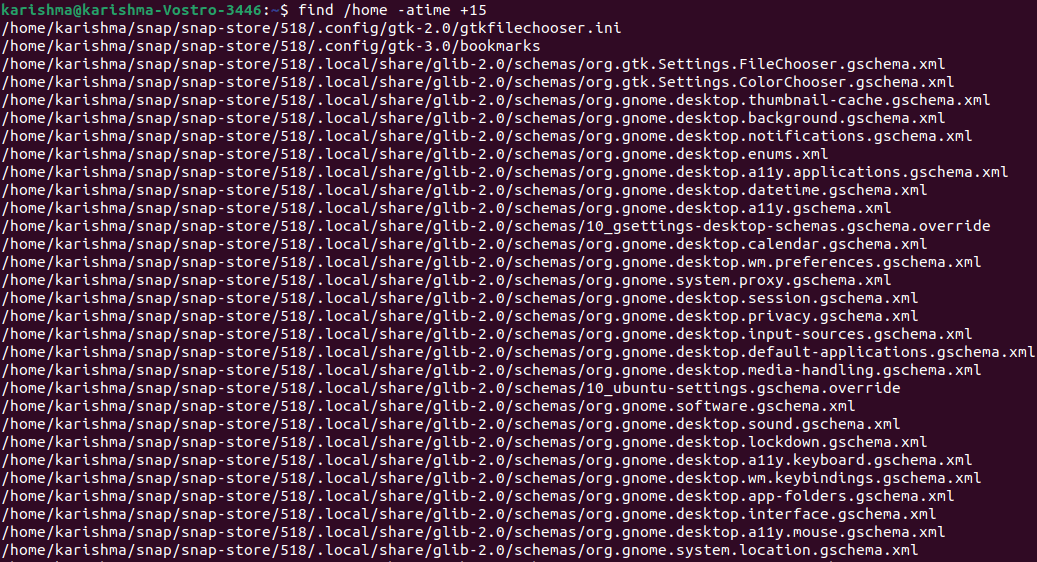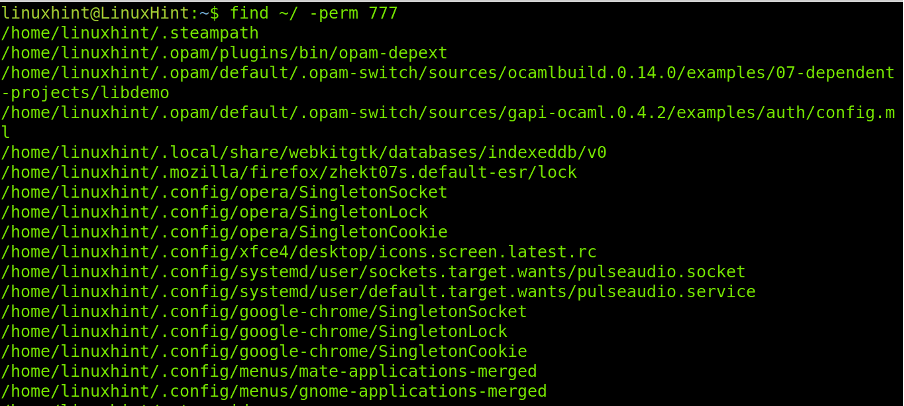

- #Linux find file recursively in directory by time stamp how to
- #Linux find file recursively in directory by time stamp code
We use the tree command in Linux to find a file recursively. In Linux, we have directories having subdirectories and files, so when we want to find a file, it is better to use the recursive method. There are multiple ways in which we will use different Linux commands.
#Linux find file recursively in directory by time stamp how to
We will also see how to search for files recursively in subdirectories in the Linux system. This wasn’t covered on video but someone in the YouTube comments asked what would you do to match several file patterns at once.In this Linux article, we will learn how to find files recursively in Linux. BONUS: What about matching multiple file patterns? The video below goes into more detail about all of the commands run. I guess globbing is faster since it’s expanding the file paths out and letting tail deal with operating on multiple files where as with find we’re calling both find and the tail command. When I used time here’s the “total” time when I ran the commands about 10 times each: My example set up for this post only has 4 files and a few directories. I didn’t go crazy benchmarking things but I will say this. If you need POSIX compliance then the find approach is one way to go. I’d consider using it in a Bash script too since you can enable globstar just for the script but I would experiment with that if / when the time comes. Pretty cool! This is what I will use in the future for 1 off commands. htaccess a/.htaccess a/b/1/.htaccess a/b/c/d/.htaccess < = You don’t need to & it with your command(s). If you’re using Bash and are running a number of commands that need globbing you can enable it on its own before you run your commands. Shopt -s globstar & cat **/.htaccess & shopt -u globstar Here’s a 1 liner to enable it, run our command and disable it again: In Bash (not zsh) you can run shopt globstar to check if it’s enabled or not. If you’re using Bash, you’ll need at least Bash 4+ and you’ll want to enable globstar.

The above will work if you’re using zsh which has globbing enabled by default. Of course we’re back to not being able to separate anything visually but spoiler alert, we can use tail instead. If your shell supports globbing then you can simplify things. I just grabbed a couple of assorted rules so we have something to look at here. Do not use these htaccess rules as a best practice. htaccess files for the sake of this post. I’ve set up a couple of nested directories and. I’m going to list out the solutions I incrementally tried in the order I tried them based on the mini-challenges I had along the way. That left me wanting to run a 1 off command to answer the questions I had and here we are. Most of their bottlenecks are at the PHP level not serving static files, but still they have more knowledge with nginx and are short staffed to do the work and asked me what I thought. This could be the difference between saying it’s a 3 hour job, 20 hour job or even suggest that it’s not worth it due to risk. Basically, I wanted to get a rough idea of how many rules would need to be ported over so I can assess the situation. I wanted a quick way to see how many of these files existed and what type of configuration was there.
#Linux find file recursively in directory by time stamp code
htaccess files through out your code base in specific directories. I’m more familiar with nginx but I do know with Apache it’s common to litter. The first thing I wanted to do was get a lay of the land and see how many Apache related files were sprinkled across the project. A company was looking to switch from Apache to nginx in a 10+ year old massive PHP project. Is it speed in a script? Perhaps a 1 off command you plan to run from your terminal? Are you targeting / using Bash 3, 4 or ZSH? There’s a number of ways we can do this depending on what you’re optimizing for. Quick Jump: Why? | The Commands | Demo Video Updated on April 4th, 2023 in #linux Recursively Print Files with Their Path Using Find, Cat or Tail Here's a few ways to output multiples files so you can skim which file has which content.


 0 kommentar(er)
0 kommentar(er)
